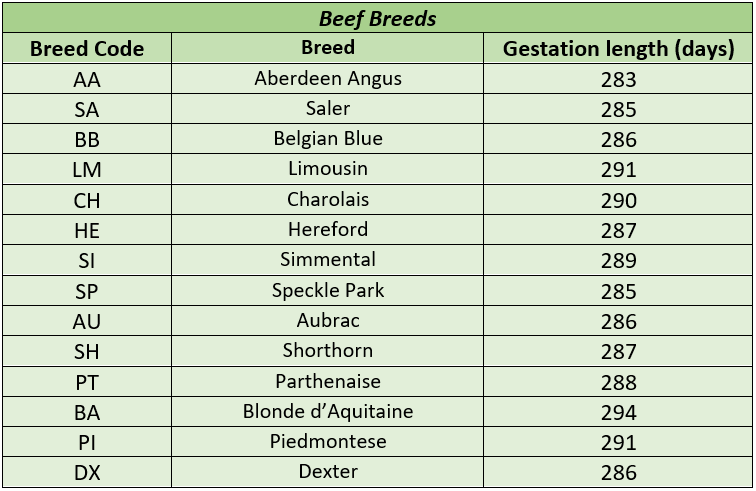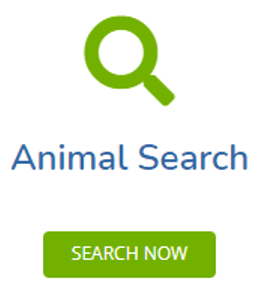What Is the Average Gestation of a Beef Cow
Gestation length refers to the number of days that the fetus is developing between insemination and calving. ICBF have recently updated the gestation length figures based on insemination and calving data recorded over the past number of years. These updated figures volition result in more than accurate expected calving dates for animals going forward. The new figures are now reflected in the dairy and beef expected calving profiles. Go to 'View Profiles' and 'Expected Calving' to view the expected calving dates for animals in your herd. (Gestation length figures will exist reviewed on an annual ground).
Currently, the average gestation length in cattle is 283 days however, there is considerable variation between the different breeds. The tables below particular these updated changes for each of the major dairy and beefiness breeds.

Table 1 shows the average gestation length for each of the major dairy breeds. The Holstein Friesians accept the shortest gestation length at 279 days. Previously, the gestation length for Holstein Friesians was 281 days.

Table 2 shows the average gestation length for each of the major beef breeds. The Aberdeen Angus on average have the shortest gestation at 283 days while Blonde d'Aquitaine on average have the longest at 294 days. (Inside each of these breeds you will also accept animals with shorter and longer gestations).
How is a bull's 'Gestation Length' figure calculated?
There are 4 factors that will both contribute to what 'Gestation Length' index figure a balderdash starts out with and also how information technology changes over time.
- Ancestry data- When a bull is born, they receive a 'Parent Average'. As the name suggests, it is an boilerplate figure that is derived from the index figures of his sire and dam at the time of his birth. If the index figure for a close relative of the bull changes significantly then this will too impact the bull himself likewise.
- Genomics- When a Dna sample has been taken for a bull and genotype effect comes back, this genomic information is then included in his evaluation. The additional data that comes from the genotype results in an increase in the bull'due south reliability figure and tin can also cause a change in the bull's gestation length.
- Foreign Information- If a balderdash has an index for 'Gestation Length' in another country and this information is sent to ICBF, it can feed into the gestation length figure in Ireland. ICBF routinely gets files from countries such as French republic and the UK.
- Irish gaelic Information- The gestation length of the bull'south ain calves born on Irish farms is the terminal piece of the jigsaw in terms of his 'Gestation Length' index.
To view the gestation length information on a bull, utilize the ICBF 'Animal Search'.

- Enter the balderdash details into the animal search e.g. FR4513 Ballygowan Albert
- Click on the 'Calving' tab

3. Click on the 'Gestation' tab

If we have the instance of FR4513 Ballygown Albert, we tin can see he has eleven,446 calves included in his gestation length figure in the November 2020 evaluation which is 278 days compared to 279 days for his herd mates.
Correct and consistent information recording is key to ensuring the accuracy of gestation lengths. Recording insemination data is essential for calculating a bull's gestation length more accurately over time besides as providing an expected calving date for the moo-cow. Insemination records are loaded straight to the ICBF database from the AI handhelds or alternatively, farmers can record the information themselves via their HerdPlus log-in (desktop or app) or via their subcontract software parcel.
Source: https://www.icbf.com/?p=16931
0 Response to "What Is the Average Gestation of a Beef Cow"
Post a Comment